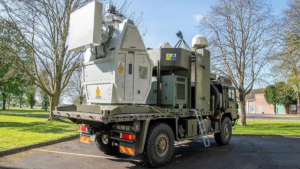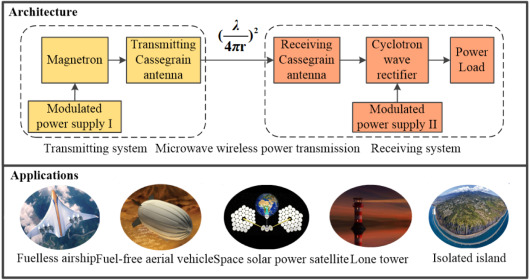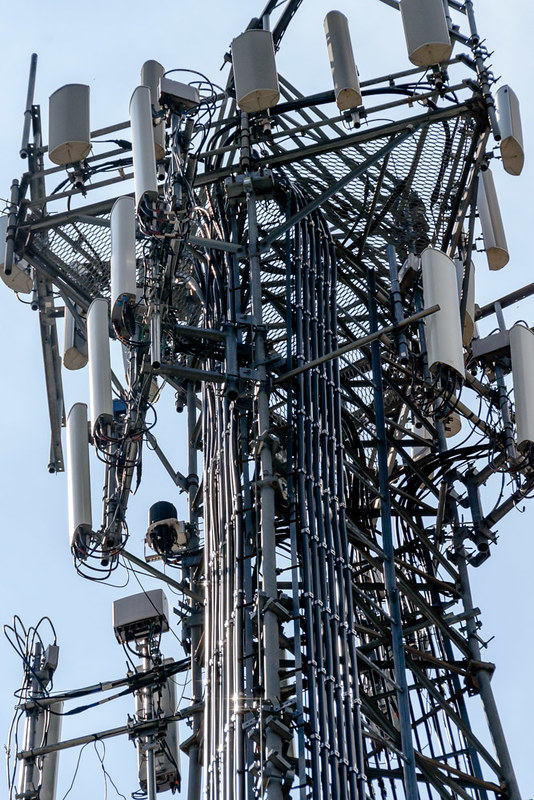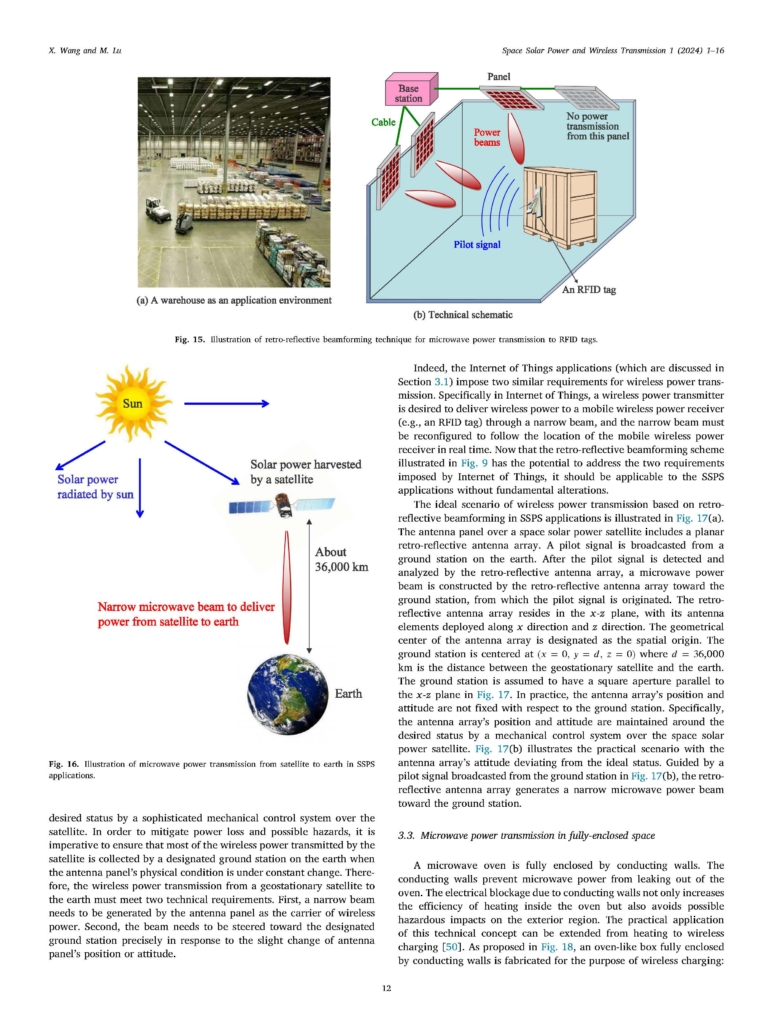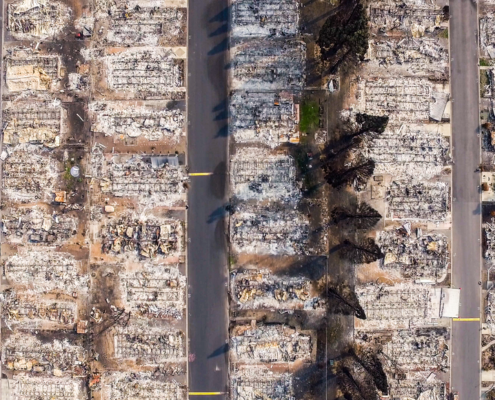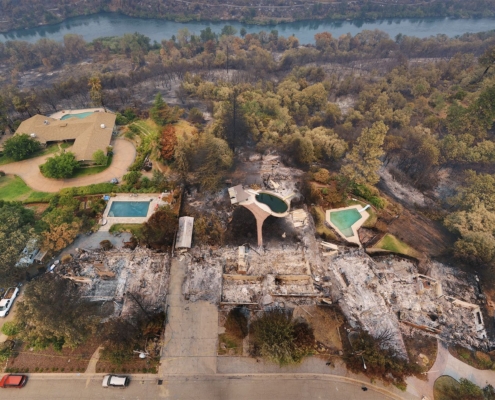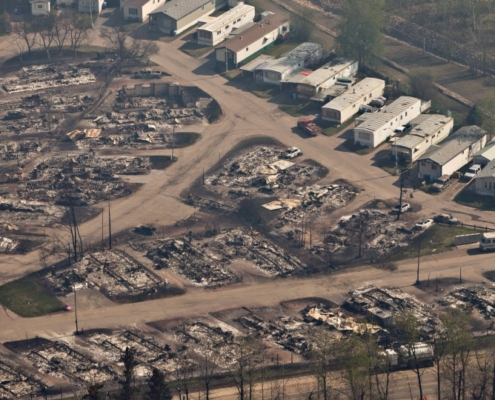Multi-Target Directed Energy
Communications Device Detonator
UK’s new UAV killer uses 13-cent radio energy shots to destroy drones
How are pagers and two-way radios targeted?
nVidia Omniverse can simulate anything. The goal of nVidia is to have a duplicate of the EARTH which would have a simulation which accurately represents everything in the physical world.
Omniverse is also a service, so it can create a Simulation of any dataset the client of that service wants to have represented.
Having entire geographic locations and key datapoints like buildings, any WiFi enabled device, vehicles, people (yes people) can be entered into Omniverse. The electromagnetic waves created by the technologies for communication create a 3 dimensional map which can be used to “track” any moving object once that object has been logged with its current location.
Design of the long-distance high-power MWPT system
In this paper, the microwave generator selected is the compact asymmetrical resonant magnetron, which can output 400 kW with a single-tube microwave with 45% conversion efficiency. The microwave generator selected feeds a highly directive antenna, which beams the energy to the target location.
Microwave power transmission
William C. Brown demonstrated in 1964, during Walter Cronkite‘s CBS News program, a microwave-powered model helicopter that received all the power it needed for flight from a microwave beam. Between 1969 and 1975, Bill Brown was technical director of a JPL Raytheon program that beamed 30 kW of power over a distance of 1 mile (1.6 km) at 9.6% efficiency.[63][64]
Aren’t pagers one-way devices – as a car radio only receives the radio signals from the radio tower?
The pagers all have an EMF (Electro-Magnetic Frequency) signature.
This signature can be used to locate the devices 3 dimensional coordinates.
Using BEAMFORMING, a focused frequency can be sent to the EXACT 3 dimensional coordinates of the device.
The frequency used would be the resonant frequency of the Lithium Ion batteries used by the pagers.
If necessary, and likely it was not (ɱ Õ § § Ã đ) only needs to get 1 pager to test this on, but since modern devices are using Lithium Ion type batteries determining the required frequency to detonate the battery packs in the pagers and two-way radios was not a great challenge.
Lastly, using radio signature / reflections of any available frequency enable the ability to locate devices and people at any given time.
Then how could 3000+ pagers be targeted simultaneously?
Using a satellite as a Directed Energy Weapon?
Using a ground based Directed Energy Weapon?
Using a technology that is EVERYWHERE that can emit a multitude of radio frequencies at a multitude of amplitudes using BEAMFORMING.
What would such a device look like?
BEAMFORMING
Wireless power transmission based on retro-reflective beamforming technique
Page 12 shown on the right.
Link below for full document.
In this video the MIT Researcher:
- Records the resonant frequency of the wineglass
- Uses a highspeed camera and strobelight to record the wineglass
- Plays back the resonant frequency with increase amplitude until the glass breaks
Breaking Glass with Sound
Interesting – a cellphone can output .3 watts of power for a phone call, and a cellphone tower can output 20-60-??KW!
The power requirements of cell phone communication.
| Bibliographic Entry | Result (w/surrounding text) |
Standardized Result |
|---|---|---|
| Levi, Anthony. Applied Quantum Mechanics. Cambridge: Cambridge University Press, 2003: 66. | “This particular cell phone operates at a center frequency ν0 = 1 GHz, and the radiated power is P0 = 300 mW.” | 0.3 W |
| Muller, Nathan J. Wireless A to Z. New York: McGraw-Hill, 2003: 39. | “Powerful 3-watt telephones are typically of the vehicle-mounted or transportable type.” | 3 W |
| Vecchione, Glen. Blue Ribbon Science Fair Projects. Toronto: Starling Publishing, 2005: 64. | “Although most car phones have a transmitter power of 3 watts, a handheld cell phone operates on about 0.75 to 1 watt of power.” | 0.75 to 1 W |
| Kaplan, Laura G. Emergency and Disaster Planning Manual. Boston, MA: McGraw-Hill, 1996: 204. | “By using the high-power version of cellular phones (the bag phone is 3 watts)…” | 3 W |
| Layton, Julia, Marshall Brain and Jeff Tyson. How Cell Phones Work. Miami: HowStuffWorks, 1998-2006. | “Many cell phones have two signal strengths: 0.6 watts and 3 watts (for comparison, most CB radios transmit at 4 watts).” | 0.6 to 3 W |
WILDFIRES
Yes, these fires are definitely “WILD”!
Trees & Plastic = Good | Metal = Bad | Trees > Houses
Tree burns from the inside – Lahaina Maui Fire
LAHAINA, MAUI 2023
LAHAINA, MAUI 2023 – METAL RIVER
PARADISE, CALIFORNIA 2018
PARADISE, CALIFORNIA 2018 – WOOD > METAL
ALAMEDA, OREGON 2020
ALAMEDA, OREGON 2020 – HOTWHEELS
CARR FIRE, CALIFORNIA 2018
CARR FIRE, CALIFORNIA 2018 – HOT STREET
FORT MCMURRAY, CANADA 2016
FORT MCMURRAY, CANADA – SERIOUS BURN OUTS
The “Iron Beam” video about directed energy has a FREQUENCY to destroy drones, missiles and rockets.
The video you are not going to see is the :
נפץ התקן תקשורת אנרגיה מכוונת מטרה
Multi-Target Directed Energy Communications Device Detonator
This Giant Israeli Anti-Missile Laser Could Save the Planet from War
Digital Twins Overview
Omniverse Digital Twins are solving the world’s greatest challenges ranging from factory scale to planetary scale and everything in between.
Creating digital twins in Omniverse allows companies such as BMW, Ericsson, Siemens Energy, and Lockheed Martin to create physically accurate virtual replicas of unique objects, processes, and environments, all constantly in sync with real-world data inputs and powered by AI. With NVIDIA Omniverse Enterprise digital twins, factories, 5G networks, power plants, and climate research are being created faster and with higher fidelity than ever before.
As if we didn’t have enough concerns over privacy in this digital age, scientists at Carnegie Mellon University appear to have developed a technology for mapping humans in 3D using only WiFi signals.
They analyse their phase and amplitude, before feeding them to computer vision algorithms to produce an image, effectively “seeing” through walls and other obstacles.

The pre-print paper was published on arXiv three weeks ago and reported first by Vice this week.
As mentioned in the news reports, the efforts to detect or map humans without using expensive equipment such as Lidar have been going on for at least a decade. It seems they have finally produced fruit that may find practical use, though it’s hard to say whether it’s going to benefit us more than, possibly, harm.
Curiously, the authors themselves tout the technology as one that could be used to help, rather than hurt privacy:
In addition, they [WiFi signals] protect individuals’ privacy and the required equipment can be bought at a reasonable price. In fact, most households in developed countries already have WiFi at home, and this technology may be scaled to monitor the well-being of elder people or just identify suspicious behaviors at home.
– “DensePose From WiFi”, J. Geng, D. Huang, F. De La Torre
I’m not convinced that the ability to see through walls, even if it produces a very general 3D image, coupled with a “reasonable price” serve to enhance our privacy, though.
DensePose itself came out of Meta’s AI research labs, originally focused on generating 3D representations of humans using RGB pixels of a flat image. Carnegie Mellon team took it a step further and used radio signals produced by WiFi networks instead of visible light spectrum.

Given how many devices we already have at home, the notion that someone could either cheaply hack or outrightly buy a device that could potentially use them to determine not only whether someone is inside, but locate them in the space, sounds more like a dystopian nightmare.
Of course, like all tech, it could be used for productive purposes, such as monitoring sick, elderly, children or even pets within the boundaries of the home to check in on them from a distance and/or determine whether they may need help.
This is something of increasing importance as many pensioners live alone and there are increased cases of someone dying without anybody noticing in Singapore.
It may also be used to detect intruders — a feature particularly handy in a large house or other properties, enhancing work of visual systems like CCTV, which could otherwise be disabled by criminals.
Nevertheless, in this particular case, privacy concerns are bound to outweigh potential benefits, what may give rise to technological countermeasures interrupting or isolating WiFi signal from penetrating walls and making its way out to unwanted guests.
Fortunately, it’s an early stage proof-of-concept rather than a market-ready solution, so it’s going to take some time before anybody puts together such a WiFi-spy scanner to sell it on Amazon. Thus, for now, you should still focus on making sure nobody hacked your indoor cameras first.
Featured Image Credit: “DensePose From WiFi”, J. Geng, D. Huang, F. De La Torre

